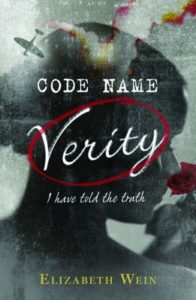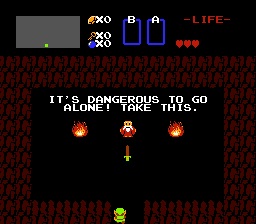(Guest post by Aimee Kuzenski)
Friendships – pure friendships, that don’t simply serve as a pause on the path to romance – can be difficult to find in YA or adult fiction. That makes the few out there special, and the rare brilliant friendship stands out like a comet.
The central friendship in Code Name Verity by Elizabeth Wein (http://www.elizabethwein.com/code-name-verity) qualifies as one of the most memorable I’ve ever read.
Code Name Verity is a historical fiction set mostly in England and Nazi-occupied France. I won’t get too detailed about the plot, because despite the fact that the book was published in 2012, I refuse to spoil anyone who has managed to remain ignorant. Suffice it to say the first half of the book shows you one view of the world, and the second half tilts that view on its head and then kicks you in the chest. I listened to the audiobook on my commute and found myself sobbing the car, a reaction I honestly rarely have. I can’t recommend it highly enough.
What I can talk about is the friendship between Queenie and Maddie. Two girls of different classes in an England preparing for World War II, they represent the sort of tight bond that comes of shared difficult circumstances. They meet as part of the war effort, and each finds something to admire in the other. Maddie loves her new friend’s strength of character and brilliant mind, the way she’s able to sharpen her tongue on bullies and fools and get the job done whatever the cost. Queenie yearns for the freedom and daring she sees in Maddie, who owns a motorbike she rebuilt herself and flies relief missions over occupied France. They become inseparable, and when Queenie must fly there in the dark of night, Maddie insists on being her pilot.
They are traumatically separated, and the reunion is short and devastating. It comes as a shock, but it’s defined and ordained by the strength of their friendship. It’s not the end of their friendship – the relationship is revealed to be even stronger than the women could have known if they hadn’t been tested by the war.
The novel takes readers from Scotland to the basement of a Gestapo headquarters, from the cockpit of a stripped down biplane to the home of a tense but loving family in the French resistance. Wein’s research was obviously extensive and careful, and all the details ring true.
But the core of the book, what makes it special, is Maddie and Queenie’s friendship. Structured as two diaries, the first belonging to Queenie, the second to Maddie, The book details the women’s inner thoughts and reminiscences of their times together, and their love and fear for each other. Their friendship is the purest thing to be found in the midst of horrific war.
In an art form that tends to see friendship as lesser than romance or family, Code Name Verity takes the stance that friendship can be more important, more resonant, more long-lasting. It’s a gorgeous, bright, long-tailed comet of a relationship, and one I’ll never forget.
***






